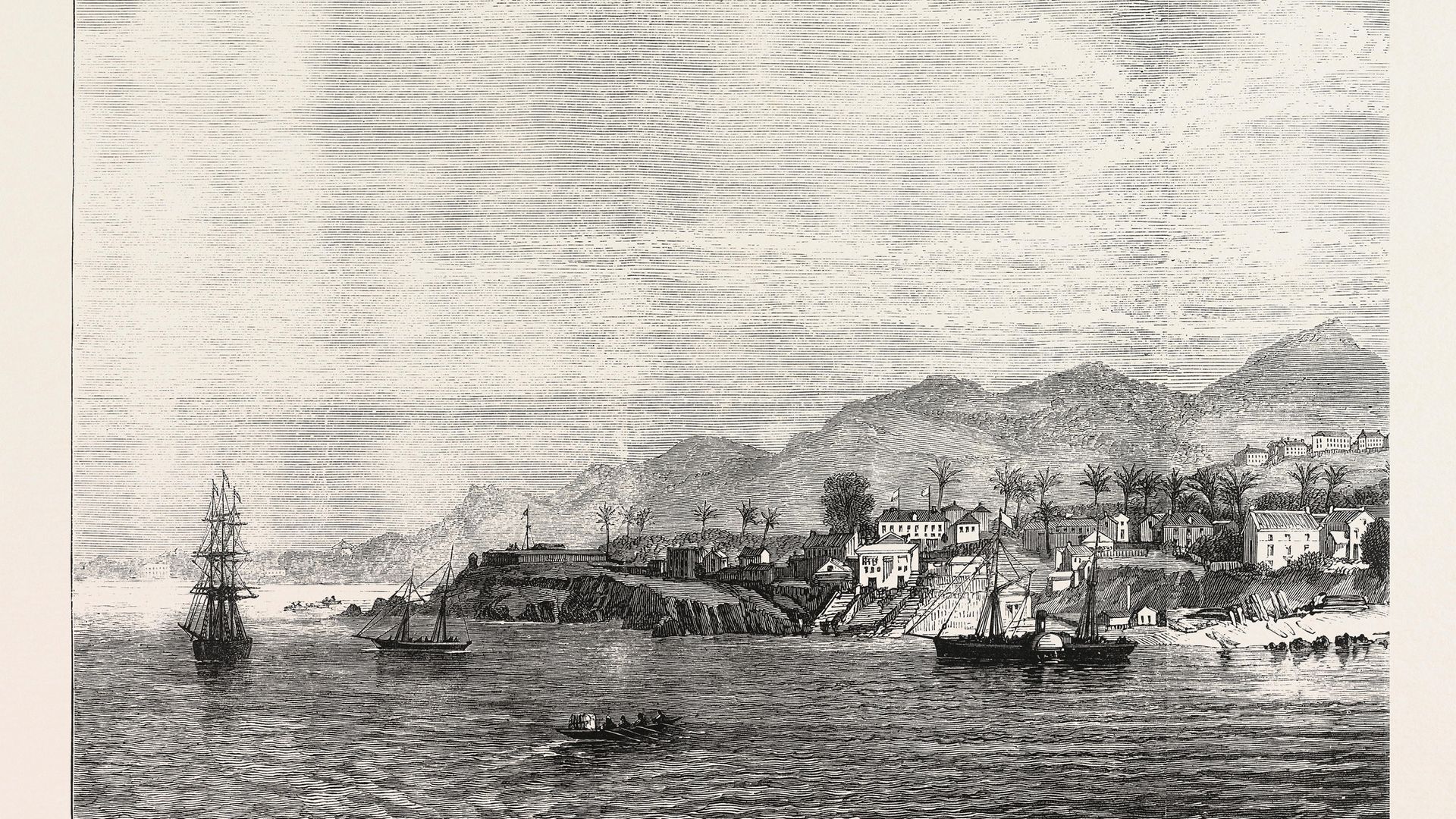
PETER TRUDGILL on how English, having spread one way around the world, suddenly reversed direction
During the 1600s and 1700s, the English language spread westwards from Britain across the Atlantic to Canada, the USA, Bermuda, the Bahamas, the Caribbean, and Central America. Then, suddenly, at the very end of the 18th century, it started spreading back the other way again, towards the east.
The shameful importation of West African slaves to the now English-speaking regions of the Caribbean and North America followed on very soon after the arrival of the English language itself: the first African slaves arrived in Bermuda (settled in 1612) in 1616, and in the Virginia colony (founded in 1607) in 1619.
It is thought that before the miseries of the slave trade finally came to a halt, around 12 million West Africans had been forcibly transported to the Americas and the Caribbean by Spanish, Portuguese, French, English, Dutch, and Danish slave-traders, and their successors such as the Americans and Brazilians. In 1790, the African-origin population of the USA alone was about 750,000, almost 20% of the total US population.
The eastward journey of the language back across the Atlantic originally resulted from a plan, which began to be implemented in 1787, to relocate some of London’s “black poor” to Sierra Leone on the west coast of Africa. Many of these were “black loyalists”, American ex-slaves who had fought with the British army during the American War of Independence. Some of them had arrived in London via Nova Scotia – where to this day there are still settlements of their descendants.
A further direct “repatriation” of African Americans from the USA to Sierra Leone occurred in 1792, when Freetown was founded by the Sierra Leone Company as a home for former American slaves. There was also settlement in Sierra Leone of Maroons, descendants of runaway slaves who had established free communities in the mountains of Jamaica.
After Britain outlawed the slave trade, the Royal Navy became active in running down slave ships, liberating the Africans, and taking them to Freetown. Sierra Leone officially became a British colony in 1808, with Freetown its capital.
A further instance of the eastward movement of English back across the Atlantic involved the repatriation of African Americans to Liberia: such programmes were often motivated by white Americans’ reluctance to live alongside free black people, and were opposed by black American leaders. But, beginning in 1820, the American Colonization Society of Virginia dispatched ships from New York to West Africa with ex-slave emigrants; and by 1821 the Society had acquired land near to present-day Monrovia from the local ruler.
These African American “colonists” initially suffered badly from attacks by local people – who resented settlement on their land – as well as from disease and malnutrition: the mortality rate was enormous. But more settlements continued to be founded and more land occupied by American colonisation societies, sometimes by force.
In 1838, the different settlements were combined into the Commonwealth of Liberia, with Monrovia as its capital; and in 1847, at the direction of the Colonization Society, independence was declared. The Americo-Liberian settlers remain African American in language and culture to this day. Although they are a minority demographically, until 1980 they constituted the politically and economically dominant group in the country.
In the 1820s, some 6,000 African-American ex-slaves also emigrated to the Dominican Republic, through arrangements between the Haitian rulers of Santo Domingo and American church and philanthropic agencies. The Dominican Republic today is basically a monolingual Spanish-speaking country, but communities of English speakers still remain in several regions of the country which were settled by these former slaves.
One such settlement is on the peninsula of Samaná. The anglophones there refer to themselves as ‘Americans’ and speak English natively, some of them to the apparent total exclusion of Spanish, even in the third and fourth generations. Most of them give Philadelphia, New York and New Jersey as the places of origin of their ancestors.
Sierra Leone
The name Sierra Leone has a multilingual history. The range of hills around Freetown harbour was called Serra Leoa ‘Lioness Mountains’ by Portuguese explorers. The spelling of the name of the modern British Commonwealth nation represents an Italianised rendering, as used by the Venetian explorer Alvide da Ca’ da Mosto, who worked for the Portuguese.
What do you think? Have your say on this and more by emailing letters@theneweuropean.co.uk











